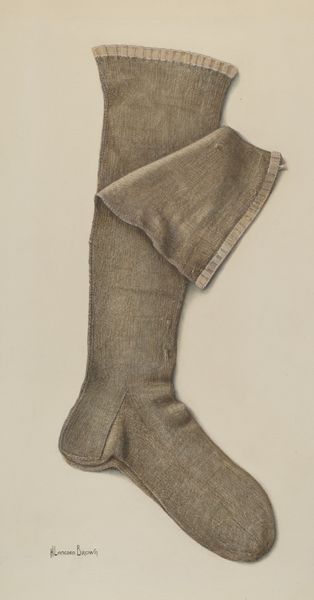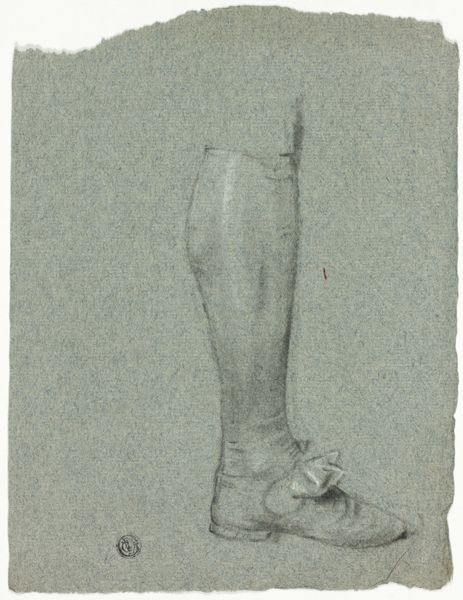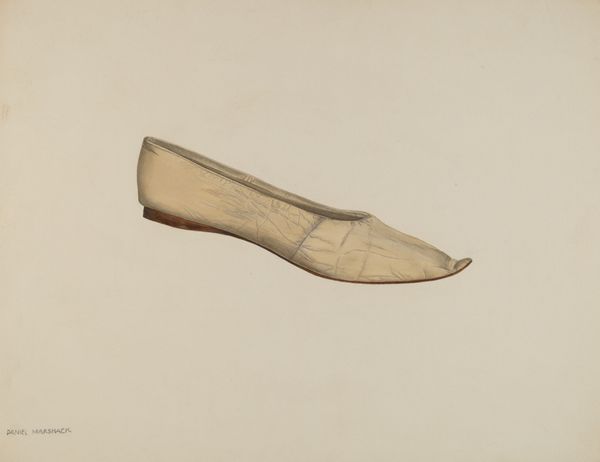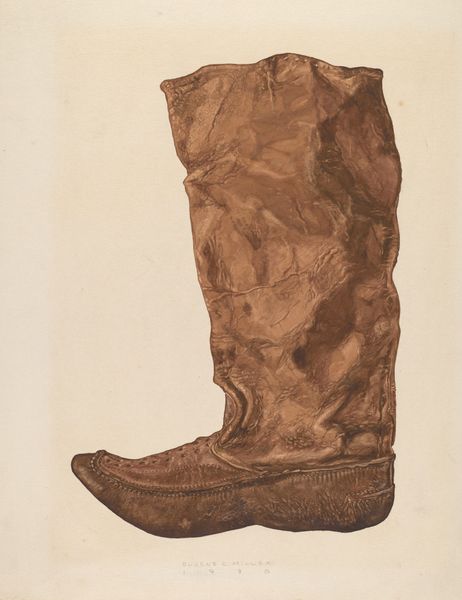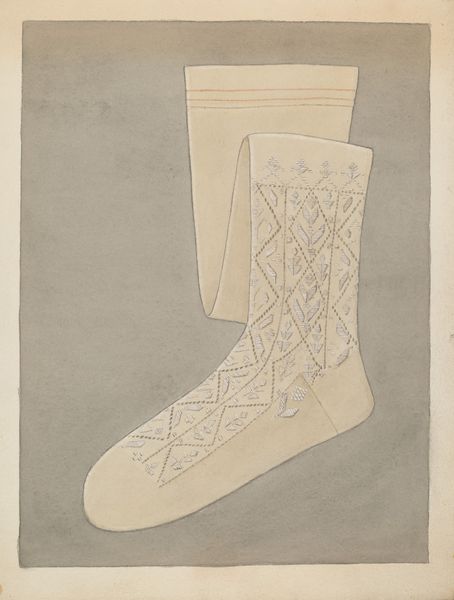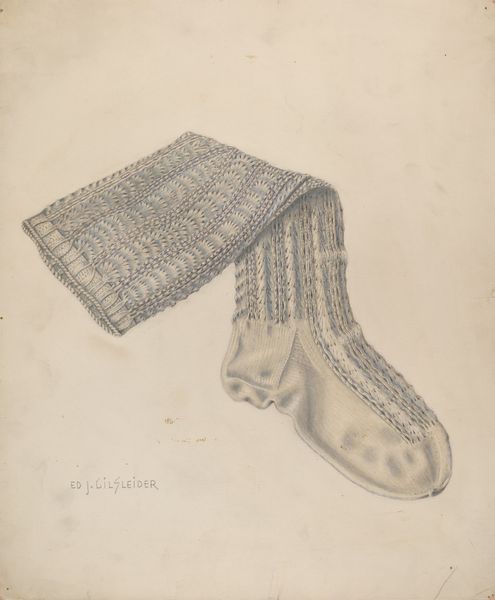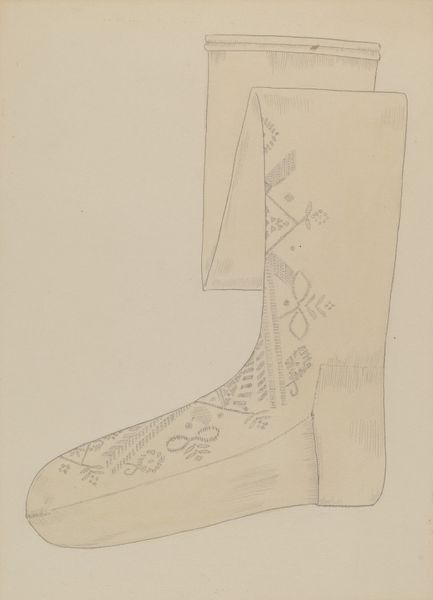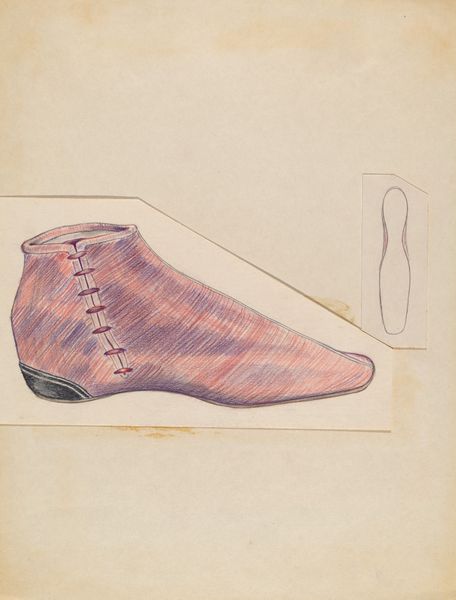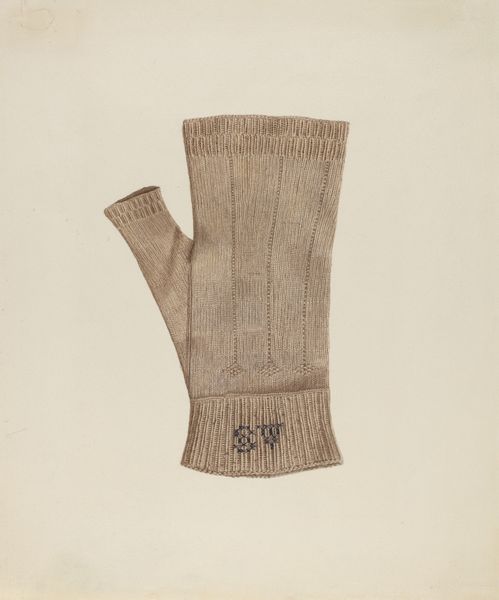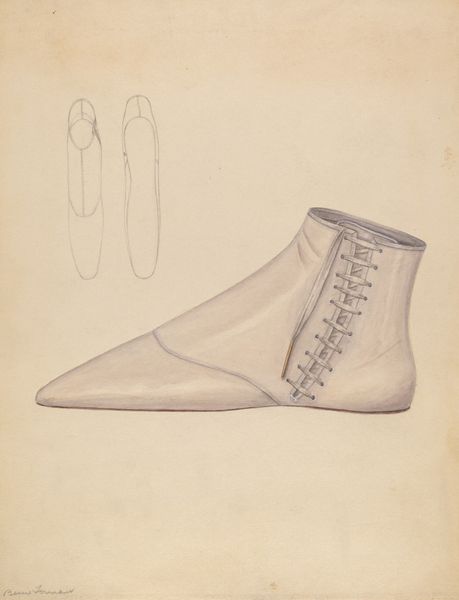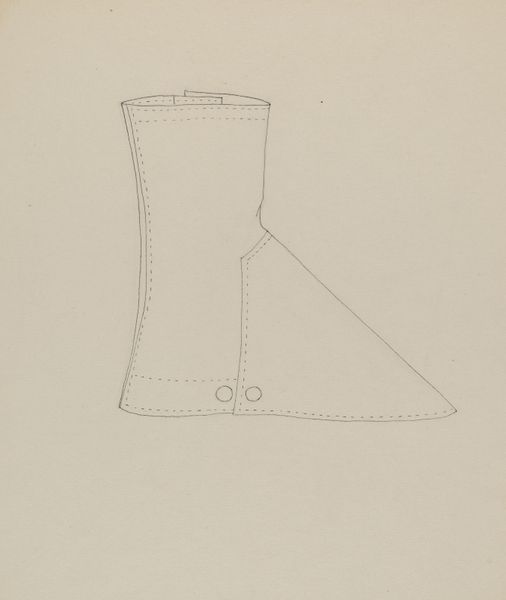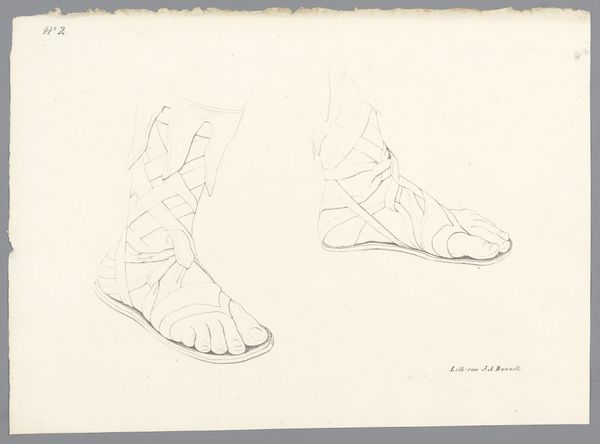
drawing
#
pencil drawn
#
drawing
#
amateur sketch
#
toned paper
#
light pencil work
#
shading to add clarity
#
pencil sketch
#
incomplete sketchy
#
possibly oil pastel
#
pencil drawing
#
tonal art
Dimensions: overall: 35.9 x 24.9 cm (14 1/8 x 9 13/16 in.)
Copyright: National Gallery of Art: CC0 1.0
Editor: Here we have "Shaker Man's Sock," a drawing created around 1936 by Alice Stearns. It looks like pencil on toned paper, and it’s surprisingly… intimate? It feels very personal, like a study of something quite ordinary. What can you tell me about it? Curator: Indeed. The subject matter immediately brings up questions of purpose and social context. Why focus on such a seemingly mundane object? My impulse is to ask, what was the societal function of Shaker craft, and how does representing an everyday item challenge traditional art world subjects? Editor: That's a good point. Shaker design is renowned for its functionality and simplicity, but also a kind of understated beauty. Curator: Precisely. So, by representing this object with such attention, what statement is being made about labour, value, and even the art world's historical preference for more ‘elevated’ subjects? This dates from the 1930s, amidst social and economic upheaval. Was this created within a community, a tribute, or personal practice by Alice Stearns? It’s an artwork shaped both by artistic practice and broader cultural narratives of value, craft and utility. Does that perspective shift your initial reaction to this drawing? Editor: It does. Thinking about the sock as representing Shaker values makes it much more powerful, than seeing just a mundane sock. It is kind of subversive. Curator: Exactly, so an item made beautiful through simplicity and use becomes not just something to wear, but a statement, and an embodiment of specific social ideals. I think this tension transforms this drawing into something quite profound. Editor: I see your point! I will definitely remember that the ordinary may have socio-political context when looking at other art.
Comments
No comments
Be the first to comment and join the conversation on the ultimate creative platform.


